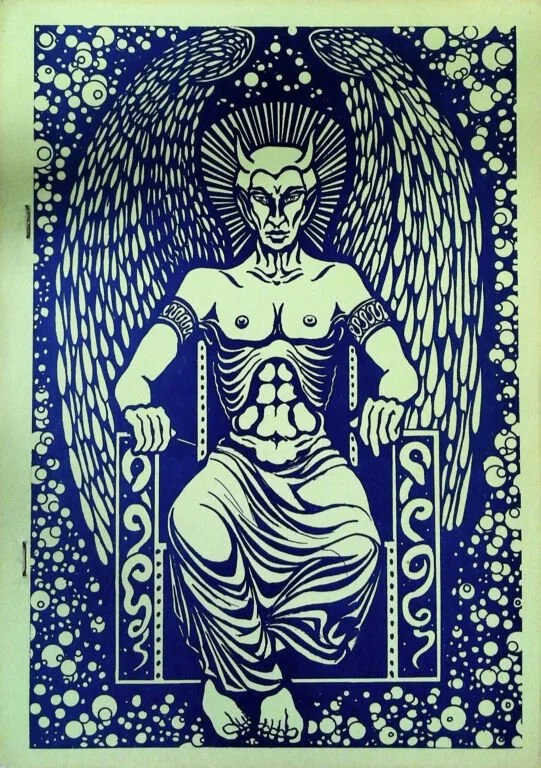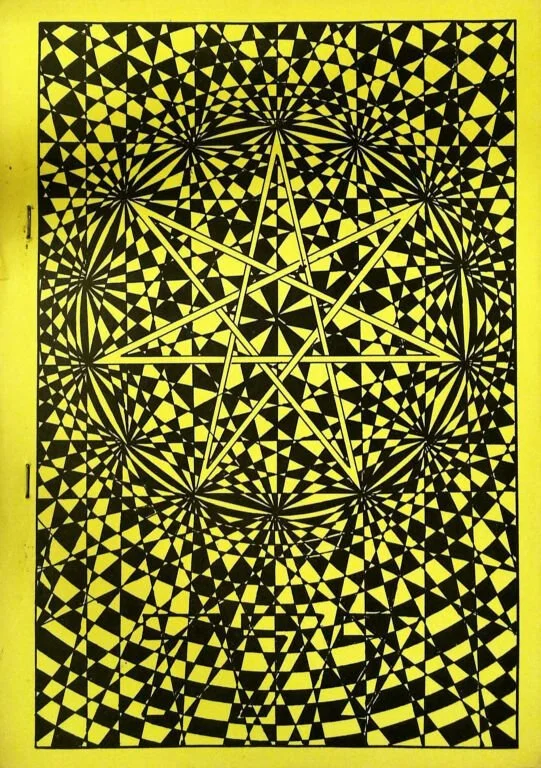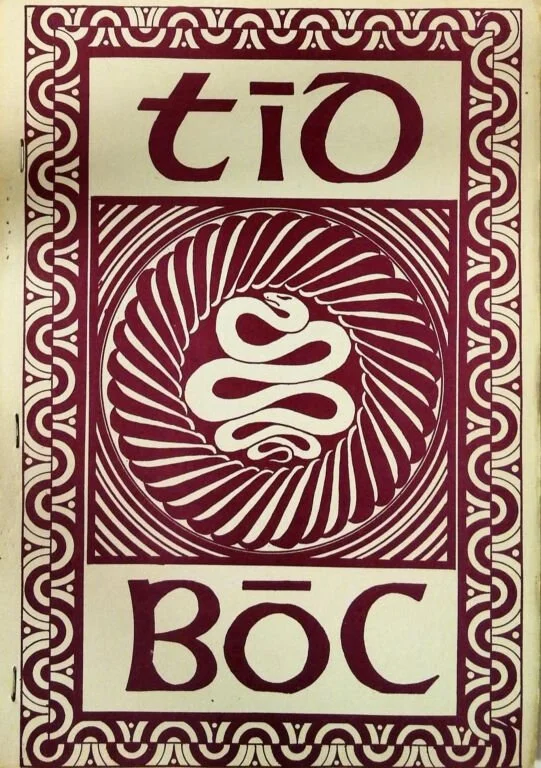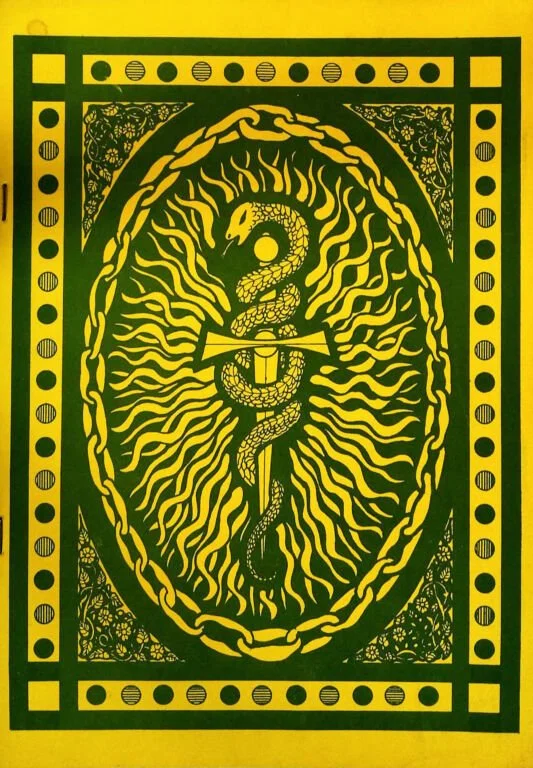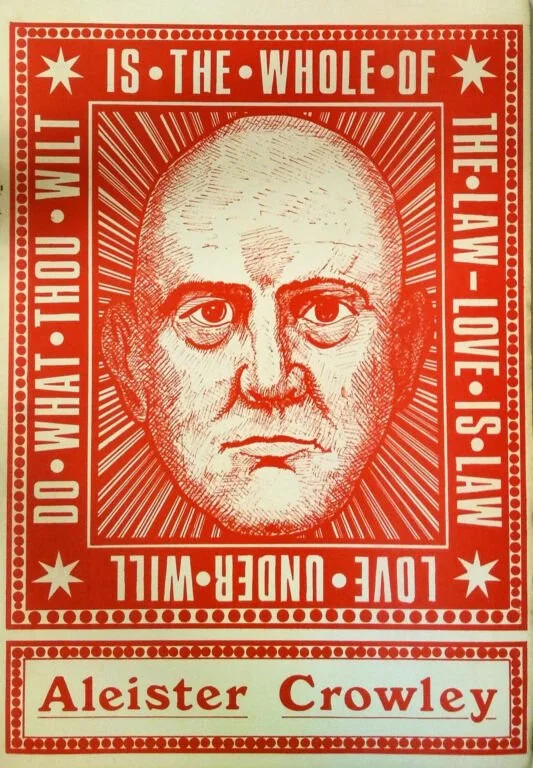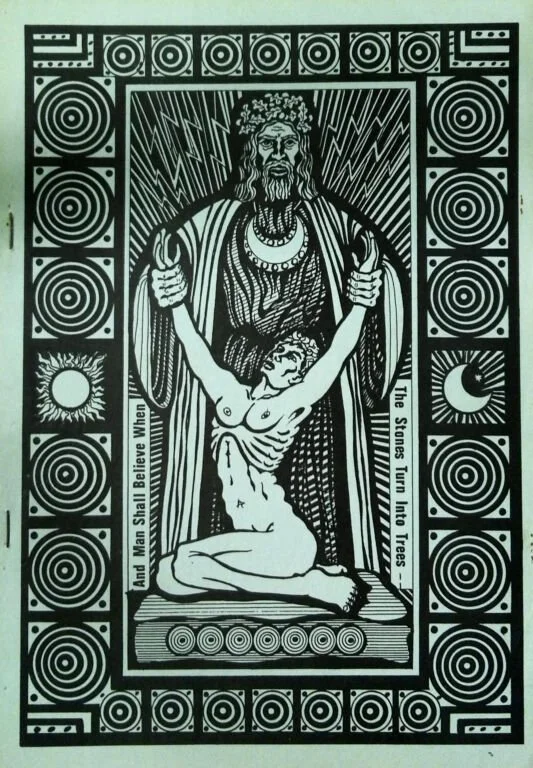Aleister Crowley’s Self-Proclaimed Son and His Small Press Publications: Liber lucis
Here is an eccentric bit of occult history that will resonate with zinesters and small press connoisseurs. What you see below is cover art for Liber lucis no. 3, Eald Cynren. Described as “A new exposition of the Law of Thelema,” this zine-reminiscent series was created c.a. 1972-1974 by Thelemic outlier Andrew Standish.
Liber lucis no. 3, Eald Cynren
Seven volumes of Liber lucis exist, of which there are eight editions (including issues 7A & 7B). According to Standish, the series — whose name means Book of Light — was, “Prepared according to the instructions of Master Therion 666, and by his son here proclaimed Master Amado 777.”
To compliment this fascinating history, the pamphlet is also adorned with striking cover art.
Harvard University maintains all eight Liber Lucis editions, including Eald Cynren. The contents are not currently digitized, but the covers are available for viewing and can be see throughout this page. The art they contain is stunning, and reflects a diverse set of occult influences.
Liber lucis no. 1
Amado, being the magical named assumed by Standish, made claim to the paternal lineage of Aleister Crowley. However, Crowley scholarship has vehemently rebuked Standish’s assertion:
In a critical review of Standish’s book The Secrets of Aleister Crowley, occult scholar and historian Gerald Suster writes:
“Amado claims in his book that Aleister taught him between the ages of 7 and 14: i.e.1937–1944. If so, why isn’t there a single mention of this vital matter in Crowley’s Diaries? There he [Crowley] records matters as trivial as the breaking of a tooth or the quality of his dinner: but he does not see fit to record meetings with an initiation of a son destined to be his successor.” According to Weiser Antiquarian, the “veracity” of Standish’s claims has been challenged “universally” within the realm of Crowley scholarship.
Besides his questionable genealogical claims to the Crowley line, Standish is probably best known for Liber Lucis. Various booksellers have noted that Liber Lucis contains fanzine production values characteristic of the 1970s.
These include matters as diverse as instructional and prescriptive ritual work, sexual arcana related to magical practice, rune divination, concerns related to astral projection, crystal properties, yogic life, Crowleyana, correspondences, and more.
In some instances, the cover art for Liber lucis is markedly serpentine. Thelemic iconography can also be spotted:
Liber lucis no. 2
Liber lucis no. 4
Liber lucis no. 5
Liber lucis no. 6
Liber lucis no. 7A
Liber lucis no. 7B
Liber Lucis is not the only pamphlet published by Standish. He also created a work entitled Hweol—A Divinitory Guide to the Life of Positive Occultism. Harvard maintains a copy of this work as well. The date is unlisted, but it is likely published c.a. 1975. Hweol appears to be a similar publication in both size and content. Hweol‘s cover depicts three solemn monks clutching candles as they stand on a firmament containing the edition’s title.
Hweol : a divinatory guide to the life of postive occultism
Another pamphlet in the Standish collection is entitled The Magus, though little is described in regards to material records, dates, or contents. A work entitled Liber Alba can also be seen floating around the bibliographic ecosystem.
The Magus
It appears that the Museum of Witchcraft and Magic maintains a collection of Liber lucis editions which include Hweol and The Magus. A link to the museum’s catalog entry can be found below. Other issues owned by the museum and unlisted by Harvard include Rad Tungol and hydels caeg- a key to the rituals of tid-boc.
Suster’s review seems to contain much of the sparse information found on the web regarding Standish. Suster had the opportunity to meet Standish/Amado himself in the mid-Seventies. Dissapointingly, Suster describes Liber Lucis as “…monumentally boring.”
Suster’s own assesments, which are likely fueled by his skepticism and personal impressions of Standish, do not diminish the value of the incredible Liber lucis cover artworks, whose artists are unknown to us — but may be assume were created by Standish himself. These covers are unique pieces of occult iconography unto themselves: anything but “monumentally boring.”
Images:
• All images via Harvard University Library’s HOLLIS portal. Julio Mario Santo Domingo Collection. From Widener Library offsite storage. Used in the spirit of educational and artistic fair use criteria. The images may be found through this link.
Bibliography:
• Museum of Witchcraft and Magic (catalog entry). Liber Lucis. Museum of Witchcraft and Magic. Boscastle, U.K. 2022.
• Suster, Gerald. ARMADO “CROWLEY” IS A FRAUD. Review of The Secrets of Aleister Crowley. Amado Crowley (Diamond Books. Leatherhead. 1991). 4 April, 2002.


